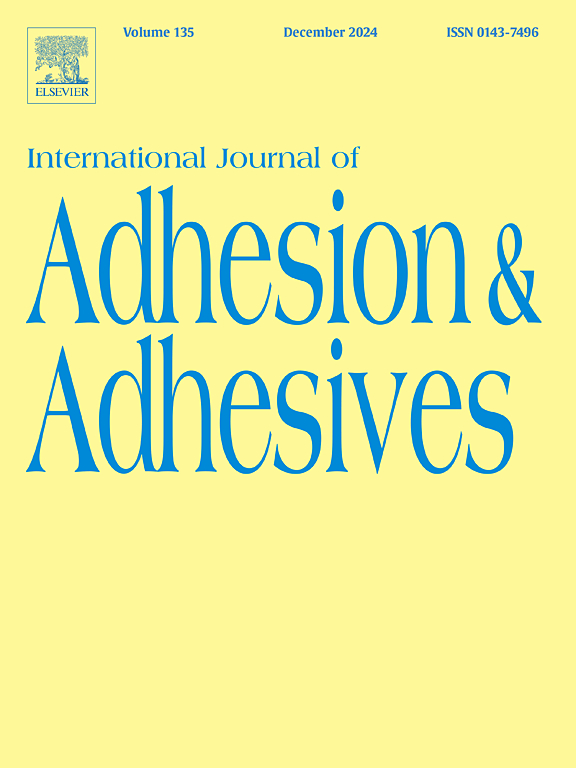Cardanol-induced surface rearrangement of fluorine in polyurethane acrylic coatings to achieve self-cleaning and anti-graffiti properties
IF 3.5
3区 材料科学
Q2 ENGINEERING, CHEMICAL
International Journal of Adhesion and Adhesives
Pub Date : 2025-02-24
DOI:10.1016/j.ijadhadh.2025.103995
引用次数: 0
Abstract
In this paper, a UV-curable solvent-free biomass polyurethane acrylic material was prepared by a two-step method, including the synthesis of cardanol-based polymerizable monomer and cardanol-based resins. This resin could form excellent self-cleaning and anti-fingerprint coatings after suffering from UV curing. It was found that the cardanol alkyl chain broke the hydrogen-fluorine (H⋅⋅⋅F) bond between the F atom of perfluoroalkyl acrylate and H-N of polyurethane in the coating. And cardanol alkyl chain synergistically induced the directional arrangement of F atoms to the surface, which improved the hydrophobic properties of the coating. This coating has good resistance to common pollutants such as water, ethanol, milk, coffee, dust, and fingerprints, and is suitable for various substrates such as sheet iron, and PET sheet. Due to the high degree of crosslinking in the coating, it can effectively prevent the penetration of acidic and alkaline substances, maintaining good self-cleaning performance even after immersion in a solution of strong acids or alkalis (pH 1–13) for 72 h. The use of cardanol-induced coating fluorine atom surface rearrangement technology can significantly reduce the amount of fluorine and also provide new ideas for the design of self-cleaning and anti-graffiti materials.

腰果酚诱导氟在聚氨酯丙烯酸涂料中的表面重排,实现自清洁和抗涂鸦性能
本文采用两步法合成腰果酚基可聚合单体和腰果酚基树脂,制备了一种可紫外光固化的无溶剂生物质聚氨酯丙烯酸材料。该树脂经紫外光固化后可形成优异的自洁防指纹涂层。结果表明,腰果酚烷基链破坏了涂料中全氟烷基丙烯酸酯的F原子与聚氨酯的H- n原子之间的氢氟键(H⋅⋅⋅F)。腰果酚烷基链协同诱导F原子向表面定向排列,提高了涂层的疏水性。该涂料对水、乙醇、牛奶、咖啡、灰尘、指纹等常见污染物具有良好的抵抗性,适用于铁皮、PET片材等各种基材。由于涂料中交联度高,可有效防止酸性和碱性物质的渗透,即使在强酸或强碱溶液(pH 1-13)中浸泡72小时也能保持良好的自清洁性能。采用果皮酚诱导涂料氟原子表面重排技术,可显著降低氟的含量,也为自清洁和防涂鸦材料的设计提供了新的思路。
本文章由计算机程序翻译,如有差异,请以英文原文为准。
求助全文
约1分钟内获得全文
求助全文
来源期刊

International Journal of Adhesion and Adhesives
工程技术-材料科学:综合
CiteScore
6.90
自引率
8.80%
发文量
200
审稿时长
8.3 months
期刊介绍:
The International Journal of Adhesion and Adhesives draws together the many aspects of the science and technology of adhesive materials, from fundamental research and development work to industrial applications. Subject areas covered include: interfacial interactions, surface chemistry, methods of testing, accumulation of test data on physical and mechanical properties, environmental effects, new adhesive materials, sealants, design of bonded joints, and manufacturing technology.
 求助内容:
求助内容: 应助结果提醒方式:
应助结果提醒方式:


